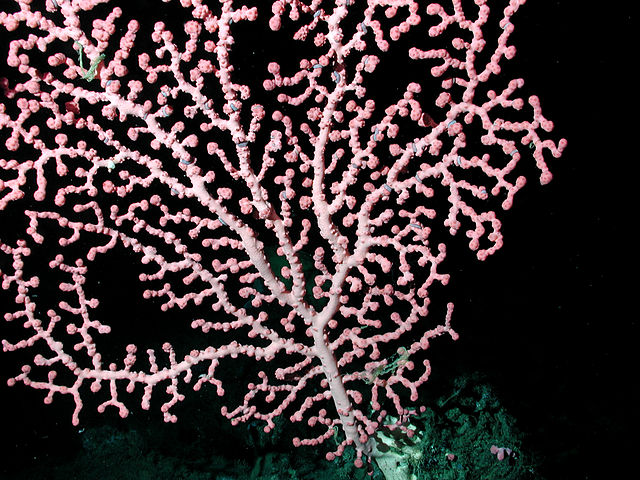The habitat of deep-water corals, also known as cold-water corals, extends to deeper, darker parts of the oceans than tropical corals, ranging from near the surface to the abyss, beyond 2,000 metres (6,600 ft) where water temperatures may be as cold as 4 °C (39 °F). Deep-water corals belong to the Phylum Cnidaria and are most often stony corals, but also include black and thorny corals and soft corals including the Gorgonians. Like tropical corals, they provide habitat to other species, but deep-water corals do not require zooxanthellae to survive.
Deep-water coral Paragorgia arborea and a Coryphaenoides fish at a depth of 1,255 m (4,117 ft) on the Davidson Seamount
A specimen of Madrepora oculata coral, collected off the coast of South Carolina.
Soft octocoral
Bubblegum coral (Paragorgia arborea) at 1257 meters water depth (California).
United Kingdom Biodiversity Action Plan
The United Kingdom Biodiversity Action Plan or (UK BAP) was the UK government's response to the Convention on Biological Diversity, opened for signature at the Rio Earth Summit in 1992. The UK was the first country to produce a national Biodiversity Action Plan. It was published in 1994 and created action plans for priority species and habitats in the UK that were most under threat so as to support their recovery.
Water vole (Arvicola amphibius) - a 'Priority Species', listed in the UK BAP.
The Stone Curlew Action Plan in the original 1994 UK BAP aimed to enhance the English breeding population from around 160 pairs to 200 pairs by the year 2000
Reedbed at Chippenham Fen - a UK Priority Habitat







